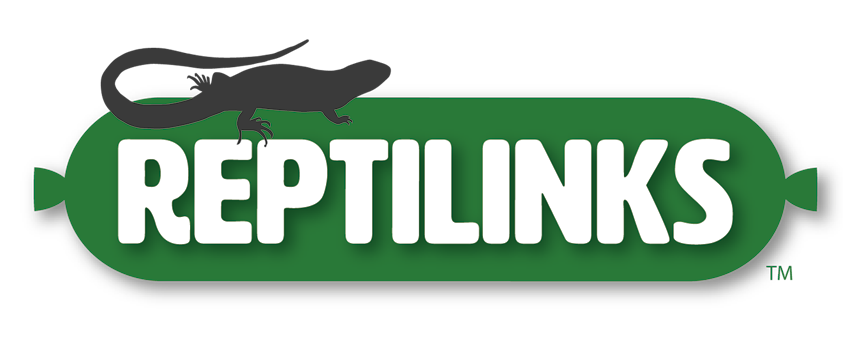Taking proper care of a pet applies whether you provide a home to a furry friend, scaly companion, or something else. Many people spend little effort when it comes to feeding their dogs—whatever brand of dog food is on sale at the store is often the choice for many. However, like any animal, dogs benefit most when their day to day diet closely resembles what their ancestors would find in the wild. The good news is that you don’t have to commit to massive dietary changes to introduce some of those benefits!
Can Dogs Eat Reptilinks?
In short—yes! Because Reptilinks are made from high-quality whole prey, they can mimic the natural items your pet would have eaten in the wild. However, Reptilinks has taken it a step further, tailoring their standard links into a dog-approved version that’s even easier! Reptilinks’ dehydrated dog links offer all the same benefits as the regular links, but they’re easier to use as treats. In fact, they’re shelf-stable for a short while, which means you can take them on walks and for a day out with your furry friend without worrying about the mess or letting them warm up.
Understanding Canine Nutrition
Most dogs are bundles of energy—but even if yours isn’t, that doesn’t mean they don’t need calories and nutrients to live a long and healthy life. The primary ingredients that make up a “whole” and well-rounded diet for a dog are proteins, fats, carbs, vitamins, minerals, and water. Sounds easy enough, but there are more dog foods on the market than you might imagine that don’t take these basics seriously.
Protein is one of the most vital nutrients for any dog. It’s used to build and maintain muscle, and a dog’s body can only make about half of the amino acids that they need to thrive. The rest will need to come from their diet. The most accessible forms of protein are those derived directly from animal products, such as the muscular tissue and organs of prey animals.
Why Reptilinks Are Great for Dogs
Reptilinks work as great dog treats or even meal supplements because their wholesome ingredients fulfill the needs of your canine companion in one package. These treats are healthier than most commercial dog foods, and one area in which they truly shine is their protein content. Reptilinks are made directly from ground whole prey; that’s not just the meat but also the organs and bones, just like your dog would eat in nature. By consuming the entire animal, your dog has access to as many vitamins and minerals as possible, from calcium in the bones to the B-complex vitamins, which are prevalent in many animals’ livers. These building blocks are crucial for your dogs’ long-term well-being, and they can be achieved easily through Reptilinks’ dehydrated links without having to worry about buying multiple types of dog food.
The dog links also come packed with healthy linoleic acid and omega-6/omega-3 fatty acids. These nutrients are found readily in the fat and marrow of natural prey, and they support your dog’s health by bolstering the sheaths in which your pet’s nerves rest (among many other important tasks). And the all-natural collagen casing that keeps the links together is fully digestible; in fact, collagen is linked to a decrease in bone loss and an increase in heart health!
What’s in Dog Reptilinks?
Reptilinks offers a wide range of links containing everything from omnivorous fruity blends to carnivore-only offerings. When it comes to feeding dogs, it’s best to stick to primarily prey items, which is why the dog Reptilinks contain Guinea fowl, chicken, and quail. These sources of protein are low in excess fat so that your pet gets the fatty acids they need without consuming too many calories. Reptilinks also includes ground whole white breed rabbit in links for dogs, which offers a greater diversity of nutrients outside of what can be found solely in fowl.
How Often Can You Feed Reptilinks to Dogs?
The answer to this question isn’t necessarily cut and dry. The best way to determine how many Reptilinks to feed your dog is to calculate their caloric needs for the day. Once you know how many calories your dog should be eating, try removing ounces from their normal feeding to match what you’re giving in Reptilinks. Remember—Reptilinks are nutritionally dense, so they can pack more calories into a treat-sized snack than you might find in other treats. Experimentation is key here; if you find that your dog is gaining weight after adding Reptilinks treats into their diet, you can either give them smaller bites of their dog links or decrease food at feeding time. The links contain a comprehensive blend of nutrients, so you won’t be harming your dog by replacing some of their regular food with Reptilinks!
Reptilinks for dogs come in packs of 7 ounces, which is just about half a pound. When you’re not feeding the links, you should store them in the refrigerator or freezer until the next time you need them. They can be kept at room temperature for a few hours, but not for storage! This comes down to how they use real prey items without additives or preservatives (which other treats are full of, so they stay stable on store shelves).

